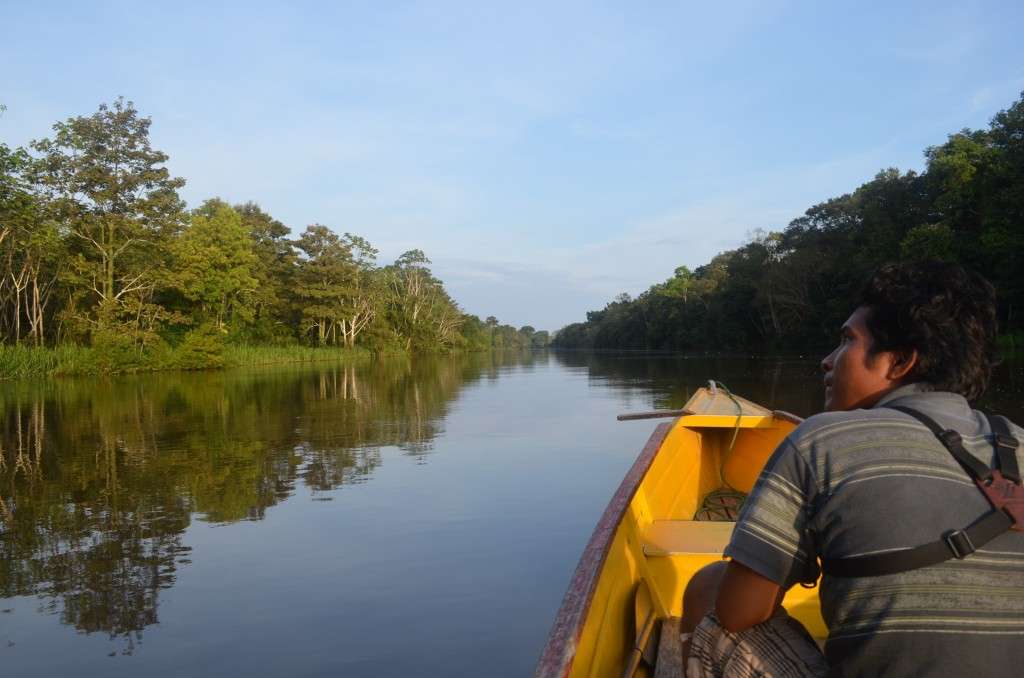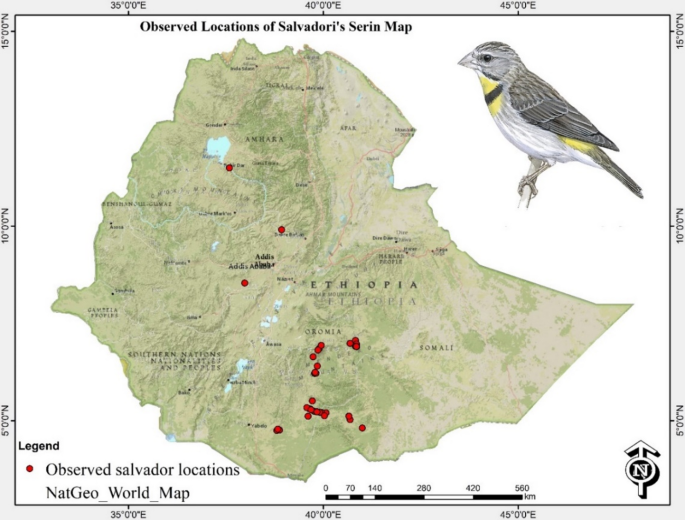Climate Update: La Niña Alert and Implications for Sustainable Development Goals
1. Executive Summary: La Niña Alert and Climate Action
A La Niña Alert is in effect for the tropical Pacific, signaling a high probability of climate pattern shifts that will directly impact progress on the Sustainable Development Goals (SDGs). The forecast necessitates a focus on SDG 13 (Climate Action), requiring enhanced monitoring and anticipatory action to build resilience in vulnerable regions.
- There is a 70% probability of La Niña conditions developing during November 2025 – January 2026.
- There is a 55% probability of these conditions continuing through December 2025 – February 2026.
2. Analysis of Oceanic and Atmospheric Indicators
Current data indicates the tropical Pacific is transitioning toward a La Niña state. These oceanic changes are critical drivers of weather patterns that affect marine ecosystems, water availability, and food security, linking directly to SDG 14 (Life Below Water), SDG 6 (Clean Water and Sanitation), and SDG 2 (Zero Hunger).
- Sea Surface Temperature: As of 18 October 2025, the 30-day relative Niño 3.4 Index was -0.82°C, indicating La Niña conditions where the central equatorial Pacific is significantly cooler than the global tropical average.
- Atmospheric Pressure: The Southern Oscillation Index (SOI) for October was +0.8, a value firmly in the La Niña range, indicating a corresponding atmospheric response.
- Subsurface Ocean Temperature: A substantial body of cooler-than-average water is present at depths of 50-200 metres in the eastern equatorial Pacific, a key precursor to a full-scale La Niña event.
3. Projected Regional Impacts on Sustainable Development
Model guidance for November-January indicates a shift in rainfall patterns consistent with La Niña, presenting divergent challenges to SDG attainment across the Pacific islands.
3.1 Regions Facing Enhanced Rainfall
An enhancement in convective forcing is forecast for the western Pacific, including Palau, western Federated States of Micronesia, and Papua New Guinea. This presents the following SDG-related challenges:
- SDG 6 (Clean Water and Sanitation): While rainfall may replenish freshwater sources, it also increases the risk of flooding, which can contaminate water supplies and damage sanitation infrastructure.
- SDG 11 (Sustainable Cities and Communities): Increased rainfall poses a threat to community infrastructure and resilience against extreme weather events.
3.2 Regions Facing Drought Conditions
Drier-than-normal conditions are highly probable for island groups near the equator, creating severe risks for multiple Sustainable Development Goals.
- Affected Nations: Marshall Islands, Nauru, Kiribati, Tuvalu, Tokelau, northern Cook Islands, and northern French Polynesia.
- SDG 6 (Clean Water and Sanitation): Forecast dryness poses a direct threat of drought, jeopardizing access to safe and sufficient water.
- SDG 2 (Zero Hunger): Water scarcity will negatively impact agriculture, threatening crop yields and undermining food security.
- SDG 14 (Life Below Water): Changes in ocean temperature and currents associated with La Niña can disrupt local fisheries, a critical source of nutrition and economic livelihood.
1. Which SDGs are addressed or connected to the issues highlighted in the article?
-
SDG 13: Climate Action
The entire article is dedicated to a climate phenomenon, La Niña, which is a direct subject of climate action. It discusses monitoring climate conditions (NINO3.4 Index, SOI) and forecasting climate-related hazards like drought and enhanced rainfall, which is central to climate adaptation and resilience.
-
SDG 6: Clean Water and Sanitation
The article’s forecast of “drier than normal conditions” for island nations like Kiribati, Tuvalu, and Nauru directly relates to the threat of water scarcity, a core issue addressed by SDG 6.
-
SDG 2: Zero Hunger
The predicted weather extremes—drought in some areas and enhanced rainfall in others—have significant implications for agriculture and food production systems. These conditions can threaten food security, especially in vulnerable island communities, connecting the article’s content to SDG 2.
-
SDG 11: Sustainable Cities and Communities
The article serves as an early warning for potential natural disasters, such as flooding from “enhanced rainfall” and water shortages from drought. Building resilience to such disasters to protect communities is a key aspect of SDG 11.
-
SDG 17: Partnerships for the Goals
The creation and dissemination of this detailed climate forecast for multiple Pacific island nations imply scientific collaboration, data sharing, and capacity-building efforts. This information sharing is crucial for helping developing states, particularly Small Island Developing States (SIDS), achieve sustainable development, which aligns with the principles of SDG 17.
2. What specific targets under those SDGs can be identified based on the article’s content?
-
SDG 13: Climate Action
- Target 13.1: Strengthen resilience and adaptive capacity to climate-related hazards and natural disasters in all countries. The article directly supports this target by providing an early warning and detailed forecast of a La Niña event, allowing the affected island nations to prepare for potential hazards like drought and excessive rainfall.
-
SDG 6: Clean Water and Sanitation
- Target 6.4: By 2030, substantially increase water-use efficiency across all sectors and ensure sustainable withdrawals and supply of freshwater to address water scarcity. The forecast of “drier than normal conditions” for nations like Kiribati, Tuvalu, and the Marshall Islands highlights an impending threat to freshwater supplies, making this target highly relevant.
-
SDG 2: Zero Hunger
- Target 2.4: By 2030, ensure sustainable food production systems and implement resilient agricultural practices that… strengthen capacity for adaptation to climate change, extreme weather, drought, flooding, and other disasters. The article’s predictions of drought and enhanced rainfall directly concern the climate-related disasters that agricultural systems must be resilient to.
-
SDG 11: Sustainable Cities and Communities
- Target 11.5: By 2030, significantly reduce the number of deaths and the number of people affected… caused by disasters, including water-related disasters. The climate alert in the article is a fundamental tool for disaster risk reduction, aiming to mitigate the impact of potential floods and droughts on vulnerable populations.
-
SDG 17: Partnerships for the Goals
- Target 17.18: By 2020, enhance capacity-building support to developing countries, including for… small island developing States, to increase significantly the availability of high-quality, timely and reliable data. The article is a clear example of providing timely and reliable climate data to several Small Island Developing States mentioned (e.g., Tuvalu, Kiribati, Palau).
3. Are there any indicators mentioned or implied in the article that can be used to measure progress towards the identified targets?
-
Explicit Indicators
The article explicitly mentions several scientific indicators used to monitor the state of the tropical Pacific and forecast La Niña. While not official SDG indicators, they are crucial data points for climate monitoring related to SDG 13:
- NINO3.4 Index: A key measure of sea surface temperatures in the central equatorial Pacific, with the article stating its value as -0.47˚C.
- Southern Oscillation Index (SOI): A measure of the atmospheric pressure difference between Tahiti and Darwin, with the article noting its value was +0.8 in October.
- Subsurface ocean temperatures: The article describes cooler than average temperatures in the eastern equatorial Pacific at depths of 50-200 metres.
-
Implied Indicators
The article’s content implies progress or provides data relevant to official SDG indicators:
- Indicator related to 13.1.2 (Number of countries with disaster risk reduction strategies): The provision of this La Niña alert is a foundational component of a multi-hazard early warning system, which is a key part of national disaster risk reduction strategies. The article itself is a tool for these strategies.
- Indicator related to 6.4.2 (Level of water stress): The forecast of “drier than normal conditions” for specific island nations is a direct qualitative indicator of impending water stress in those regions.
- Indicator related to 17.18.1 (Proportion of sustainable development indicators produced at the national level with full disaggregation): The article provides timely, geographically disaggregated climate data for numerous Small Island Developing States, contributing to the spirit of this indicator by making crucial data available at a sub-regional level.
4. Table of SDGs, Targets, and Indicators
| SDGs | Targets | Indicators |
|---|---|---|
| SDG 13: Climate Action | 13.1: Strengthen resilience and adaptive capacity to climate-related hazards and natural disasters. | Explicit: NINO3.4 Index (-0.47˚C), Southern Oscillation Index (+0.8), Subsurface ocean temperatures (cooler in the east). Implied: The issuance of the La Niña Alert serves as an indicator of a functioning early warning system. |
| SDG 6: Clean Water and Sanitation | 6.4: Ensure sustainable withdrawals and supply of freshwater to address water scarcity. | Implied: Forecast of “drier than normal conditions” for Kiribati, Tuvalu, etc., serves as a qualitative indicator of future increased water stress (related to official indicator 6.4.2). |
| SDG 2: Zero Hunger | 2.4: Ensure sustainable food production systems and implement resilient agricultural practices. | Implied: Predictions of drought and enhanced rainfall act as risk indicators for agricultural production and food security. |
| SDG 11: Sustainable Cities and Communities | 11.5: Significantly reduce the number of people affected by disasters. | Implied: The article’s forecast of climate hazards (drought, enhanced rainfall) is a key input for disaster risk management aimed at reducing the number of affected persons (related to indicator 11.5.1). |
| SDG 17: Partnerships for the Goals | 17.18: Enhance capacity-building support to SIDS to increase the availability of timely and reliable data. | Implied: The existence of the detailed, geographically specific climate report itself serves as an indicator of progress in providing timely and reliable data to Small Island Developing States. |
Source: niwa.co.nz







